Traditional African clothing is not just about covering our bodies; it represents our identity and culture. Each region in Africa has its own unique attire that distinguishes it from others. These traditional ethnic clothings hold significant meaning and are worn on special events or celebrations, reflecting the rich cultural heritage and pride of the wearer.
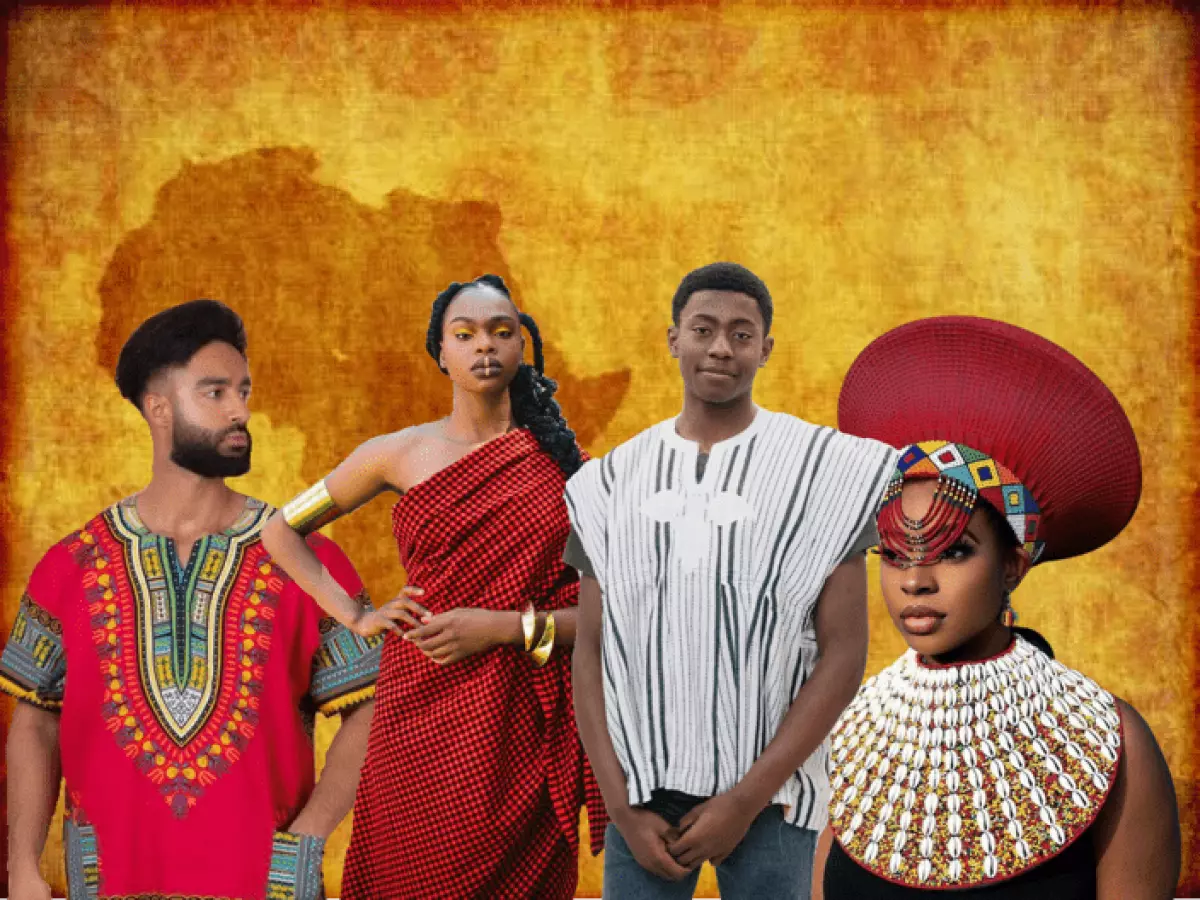 Traditional African Clothings: 20 Ethnic Attires from Around Africa
Traditional African Clothings: 20 Ethnic Attires from Around Africa
Kente
Kente is a remarkable silk and cotton fabric woven by the Akan tribe in Ghana. It was historically worn by royalty among ethnic groups like the Ashanti and Ewe. Today, Kente cloth is widely used to commemorate special occasions such as weddings and birthdays. The popularity of Kente patterns has led to mass-produced versions known as "Kente prints" being used in graduation ceremonies worldwide.
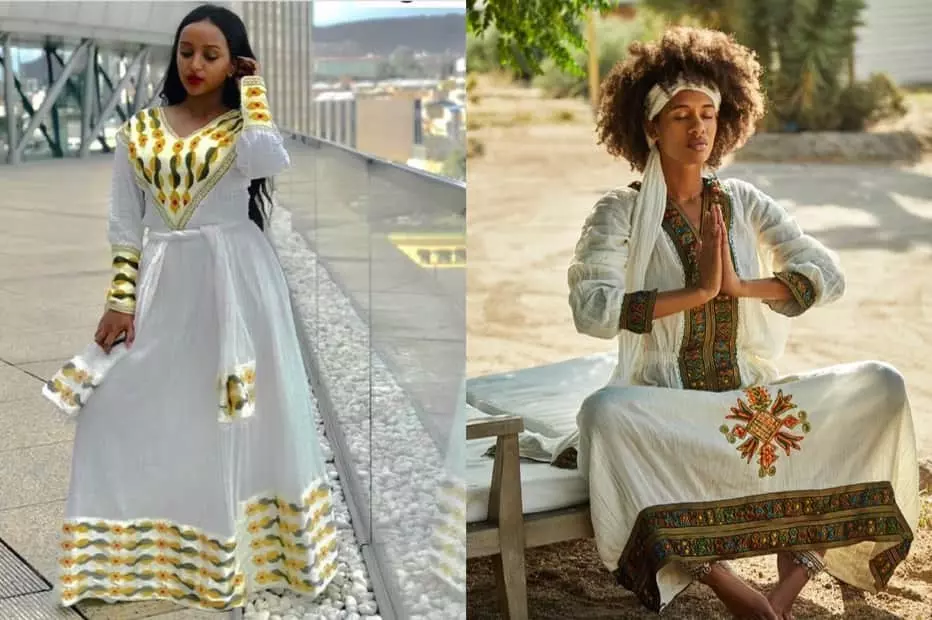
Habesha Kemis
Habesha kemis is the traditional attire worn by women in Ethiopia. This ankle-length dress is usually donned at formal events, holidays, and invitations. Made of cotton fabric, the Habesha kemis is available in white, grey, or beige shades. Women often complete their outfit by wrapping a shawl called a netela around the dress.

Kanzu
The kanzu is a white or cream-colored robe worn predominantly by men in the African Great Lakes region. It serves as the national costume of Tanzania and the Comoros. The kanzu is also worn in coastal Muslim regions of Tanzania and Kenya. In Uganda, it is considered the most important dress for men. The term "kanzu" is of Swahili origin and means "robe" or "tunic."
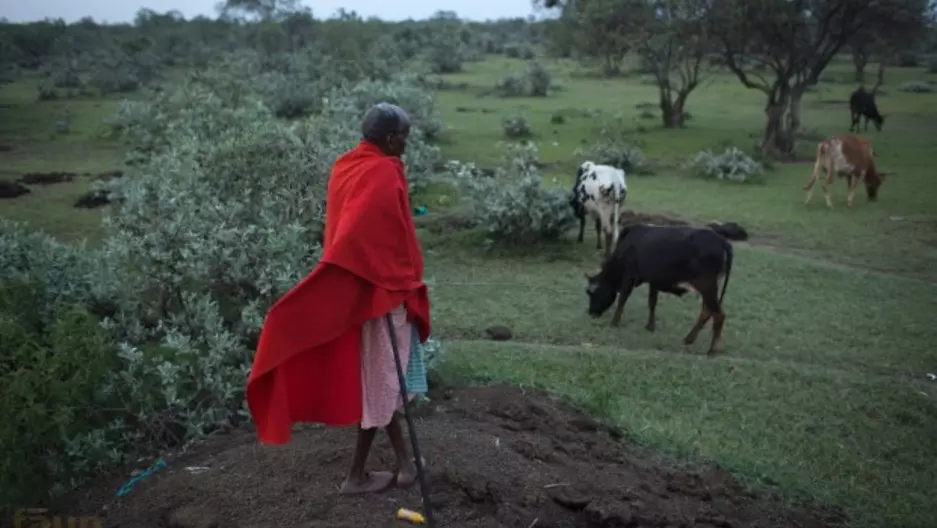
The Shuka
The Maasai people of East Africa are often identified by their colorful beaded necklaces, wooden sticks, and a vibrant red or blue shuka cloth wrapped around their bodies. The Shuka, made of a durable and thick fabric, protects the Maasai from the harsh weather of the savannah.

Kanga
The kanzu is the traditional dress worn by Swahili-speaking men in East Africa, while women wear the kanga and gomesi. The kanga is a colorful fabric similar to kitenge but lighter in weight. It is a piece of printed cotton fabric sold in pairs, with a border along all four sides and a unique design in the central part. The kanga is popular throughout the African Great Lakes region.
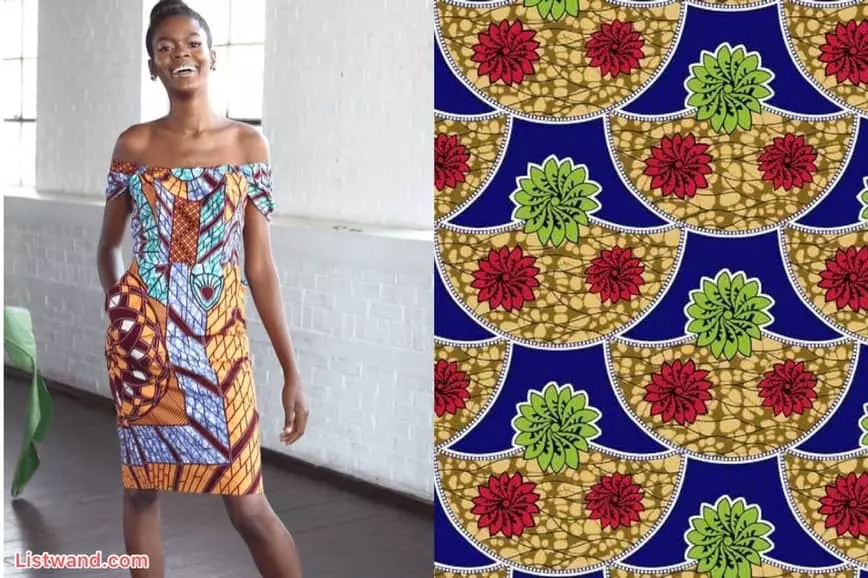
Kitenge
Kitenge, also known as chitenge, is an African fabric similar to a sarong. It is widely popular in East, West, and Central Africa. Kitenges are vibrant, colorful pieces of fabric with various patterns and designs. They are often worn by women, wrapped around the chest or waist, as headscarves, or even as baby slings. Kitenge is worn in many African countries, including Kenya, Uganda, Tanzania, Sudan, Nigeria, and more.

Ndebele Fashion
The Ndebeles of South Africa are known for their intricate beadwork and brightly colored homes adorned with striking geometric designs.
Women fashion: Girls and older girls wear beaded aprons known as isiphephetu, given to them by their mothers. Married women wear longer aprons made of hardened skin, lavishly decorated with geometric designs. They also wear beaded hoops called isigolwani around their necks, arms, legs, and waist. Ndebele men wear animal skin aprons, beaded breastplates called iporiyana, and accessorize with animal skin headbands, ankle bands, and capes.
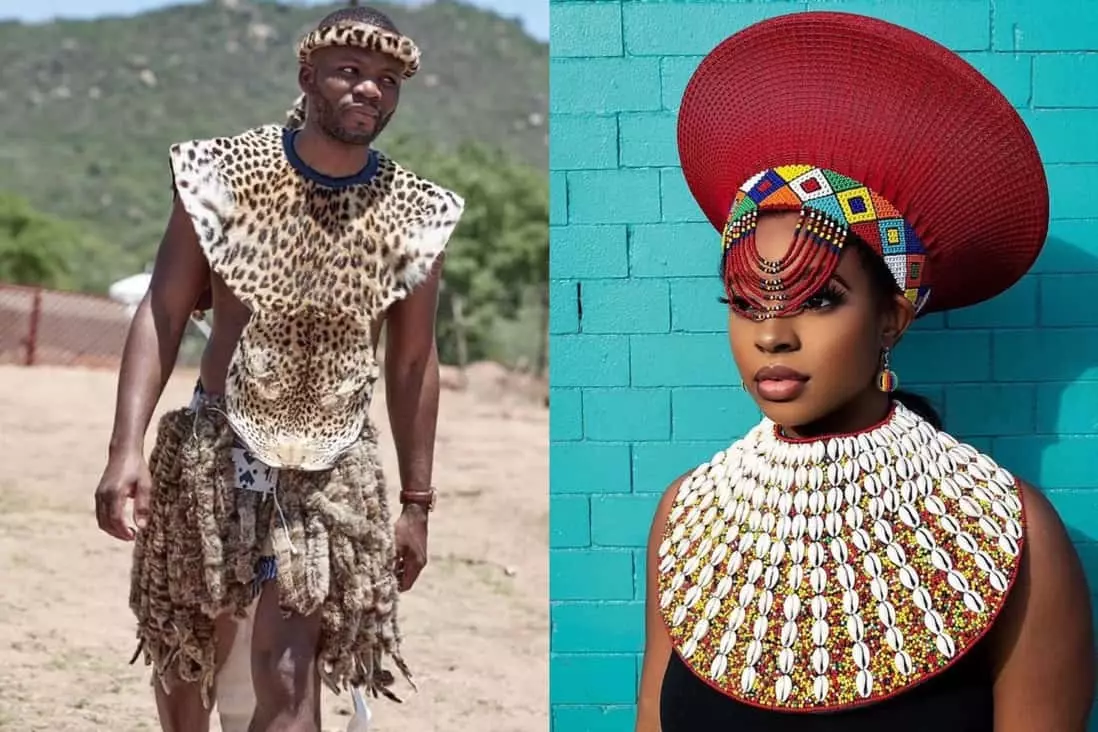
Zulu Fashion
Traditional Zulu dress for men often consists of animal skins and feathers, with the type of skins indicating the wearer's status. The tufts of a cow's tail, known as amashoba, are worn on the upper arms and below the knee to create the illusion of a broader physique.
Ibheshu: The apron worn by Zulu men to cover their buttocks is called "ibheshu." It is made from soft and easily processed calf-skin.
Ichikolo (Beaded hat): The Zulu hat, known as Isicholo, is traditionally worn by married Zulu women during weddings, birthdays, cultural, and religious ceremonies. It is made of woven grass, covered with polyester cloth, and patterned with cotton and wool threads.

Ghanaian Smock
The Ghanaian smock, a plaid shirt similar to the dashiki, is commonly worn by men in Ghana. It is considered a mark of power and tradition, with political leaders often seen wearing it for public statements. The smock, also known as Batakari, became significant during Ghana's independence, as Kwame Nkrumah declared independence wearing it on March 6, 1957. The smock, along with Kente cloth, represents the national dress of Ghana.
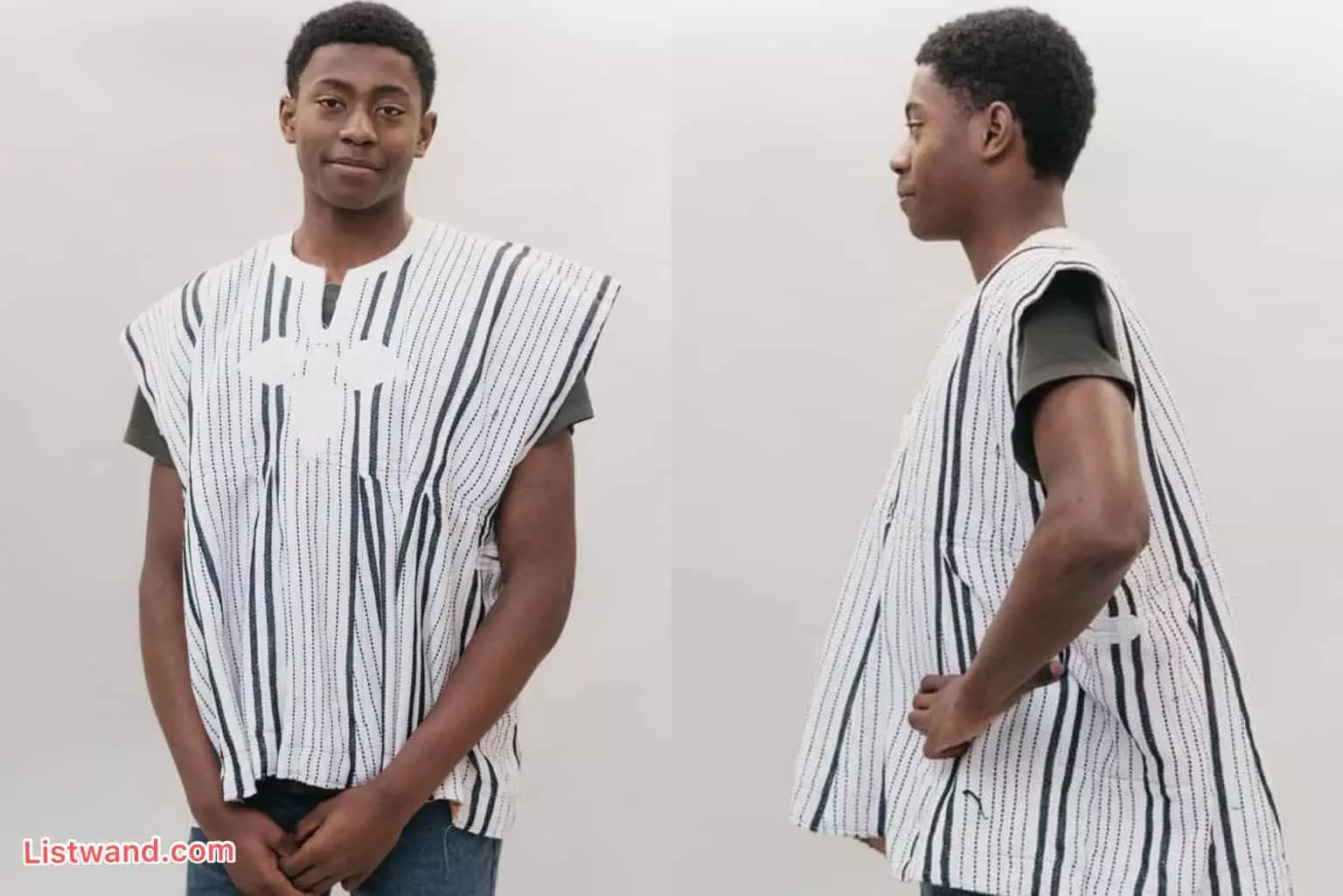
Kaftan
The kaftan is a long, loose-fitting robe with long sleeves, reaching down to the ankles. It is worn by both men and women in various cultures and regions, notably in North and Western Africa.
In West Africa, women wear a kaftan, while the men's garment is called a Senegalese kaftan. The male version features long bell-like sleeves and is often paired with matching drawstring pants called tubay. In North Africa, particularly Morocco, kaftans are predominantly worn by women. Moroccan kaftans may be one-piece dresses or two-piece versions called Takchita, worn with a large belt.
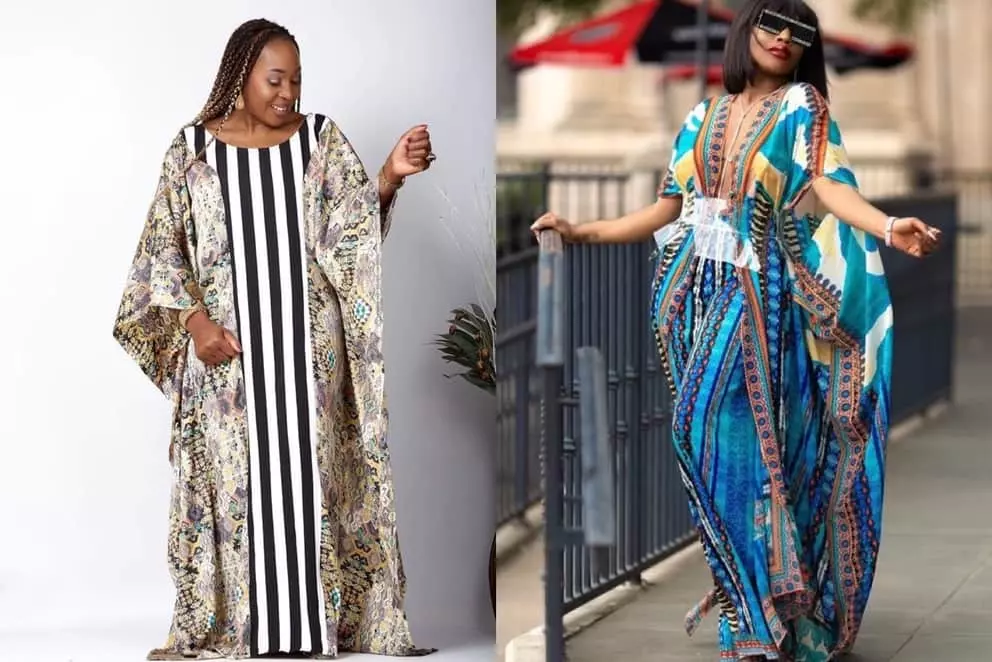
Isiagu
The Isiagu is a traditional outfit worn by the people of eastern Nigeria. It features a distinctive lion head pattern on the fabric, giving it its name. Isiagu is typically worn on special occasions such as traditional weddings and chieftaincy titles. The shirt, available in long or short sleeves, often features gold buttons linked by a chain. It is usually paired with a red cap or the Igbo leopard cap.
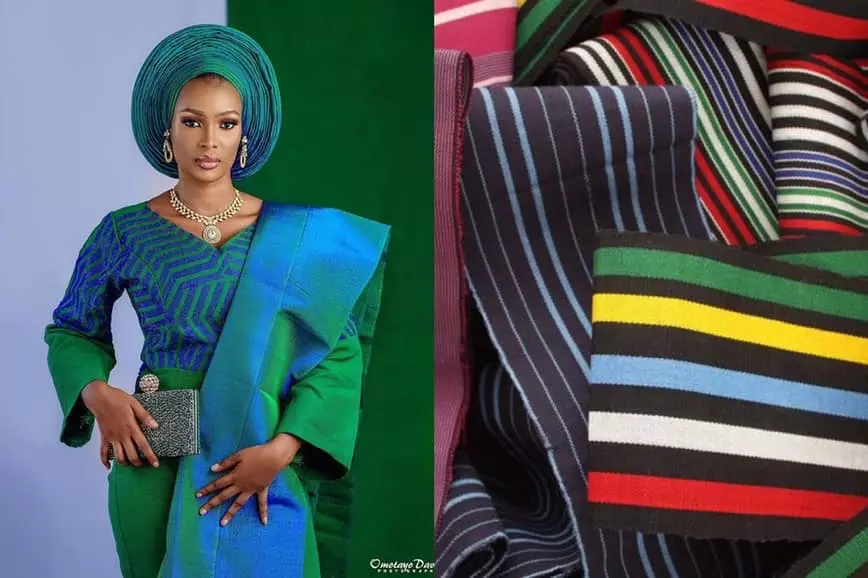
Agbada
Agbada is a flowing wide-sleeved robe worn by men in West Africa for religious and ceremonial occasions, festivals, weddings, funerals, and Friday prayer at the mosque. It is often intricately embroidered and has become the formal attire of many West African countries.

Kanga
The kanga is a versatile single piece of cloth, measuring around one meter by one and a half meters. It is a traditional form of dress among men and women in the African Great Lakes region. The kanga features a border along all four sides and a unique design in the central part. It can be used as a wrap garment, headscarf, or even cut and hemmed to create a set.

Aso Oke
Aso Oke is a traditional women's fashion among the Yoruba people of Nigeria and Benin. It comprises a blouse (buba), wrapped skirt (iro), head tie (gele), and shoulder sash (iborun or ipele). The Yoruba consider this attire a symbol of power and tradition. It is often worn for special occasions, including weddings and cultural events.
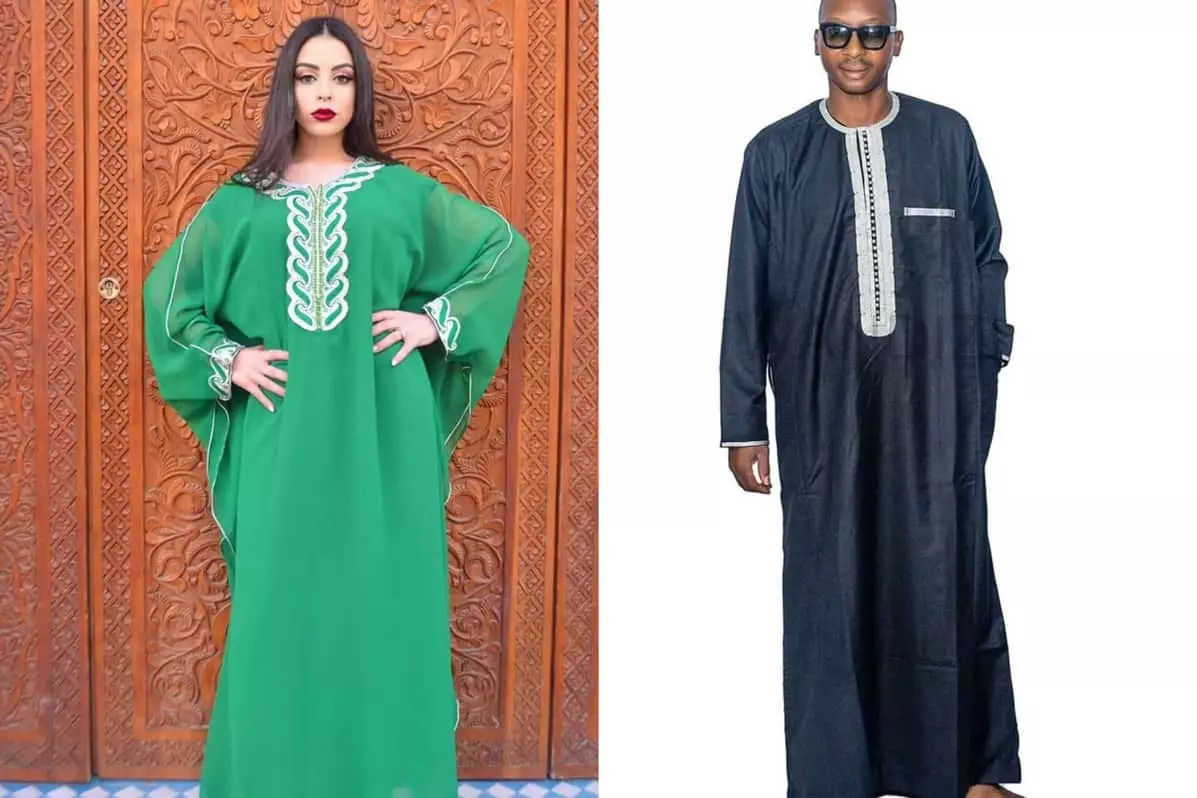
Dashiki
The dashiki is a colorful garment mainly worn in West Africa. This simple tunic with a V-shaped collar can be formal or informal. Dashikis are often embroidered with elaborate designs and dyed in bold colors. They are typically paired with jeans for men or worn as dresses by women.

Gomesi
The gomesi or busuuti is a colorful floor-length dress with a square neckline and short, puffed sleeves. It is commonly worn by women in Buganda and Busoga, Uganda. The gown is made of silk, cotton, or linen fabric, often with vibrant patterns. While urban women wear gomesi to weddings and special occasions, women in rural areas may wear it every day.

Jelabiya
The Jelabiya is a loose-fitting, traditional Egyptian garment that is also worn in Sudan, Northern Nigeria, Ethiopia, and Eritrea. It differs from the Arabic thawb with its wider cut, lack of collar, and longer, wider sleeves. Jelabiyas may be worn by both men and women, and they come in formal and informal styles. White jelabiyas are popular during summer months for their cooling properties, while darker ones are fashionable in winter.
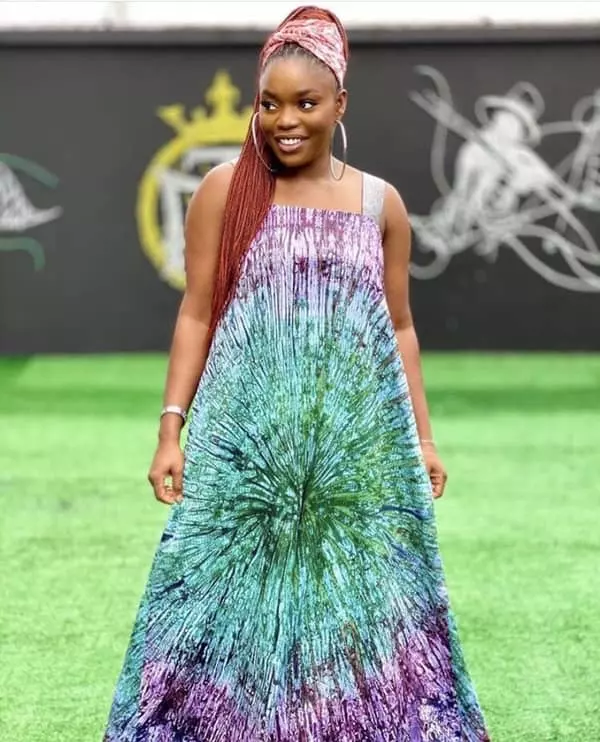
Djellaba
The djellaba is a long, loose-fitting unisex robe with full sleeves worn in the Maghreb region of North Africa. Djellabas are made of wool and come in various shapes and colors. They are worn by both men and women, with the color often indicating the wearer's marital status. The djellaba features a large hood called a “qob,” which provides protection against the elements.

Adire
Adire is a fabric common among the people of Egbaland in Nigeria's Ogun State and throughout Yorubaland. It is known for its wax-resist methods that produce patterned designs in vibrant colors. Adire is made by resist-dyeing, where specific parts of the fabric are treated to prevent them from absorbing dye. The cloth is often made up of two strips of factory-produced cotton sewn together to form a square shape.

Ankara
Ankara, also known as African wax prints, is a widely popular fabric in Africa, especially West Africa. These colorful cotton cloths with batik-inspired printing lack differences in color intensity on the front and back sides. Ankara fabrics are categorized by their manufacturing processes and are often worn for special occasions like weddings and birthdays.

Each traditional African attire mentioned here represents the beauty, diversity, and cultural richness of Africa. From the striking patterns of Kente to the intricate beadwork of the Ndebeles, these ethnic attires are not only a representation of identity but also a reflection of the craftsmanship and artistry of African cultures. Let us appreciate and celebrate the unique heritage woven into every thread of these traditional garments.

















